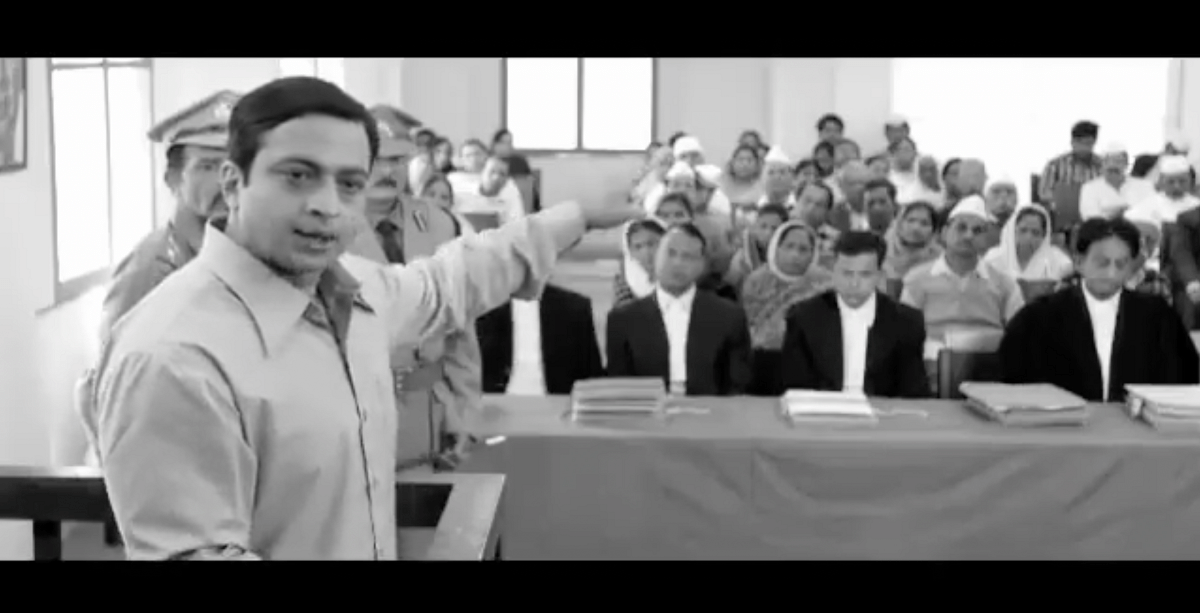Terrorist, murderer, extremist and for some, a patriot — Nathuram Godse is an unavoidable part of Indian history. The man who killed Mohandas Karamchand Gandhi has been analysed and examined by analysts on both sides of the political spectrum, but the short film Why I Killed Gandhi attempts to put Godse’s own beliefs and convictions on screen. And with a Member of Parliament from the Nationalist Congress Party, Amol Ramsing Kolhe, essaying the titular role of Godse, coupled with several legal entanglements, director Ashok Tyagi’s film managed to garner headlines even before its release Sunday.
The 45-minute short film, which is now streaming on the little-known OTT platform Limelight, can be viewed as a poor attempt at trying to complicate the legacy of Godse. Instead of delving into his psyche, as is being claimed, the film is more a conglomeration of cliches involving India’s independence and the Partition. Lazy work is what describes it best.
Journey to streaming platform
With a film on Godse, the involvement of the politics, religion and media nexus is inevitable. Why I Killed Gandhi, which draws its title from the statement Godse read out before the Punjab High Court in 1948, is no exception. On 23 January, the All Indian Cine Workers Association (AICWA) wrote to Prime Minister Narendra Modi, calling for a complete ban on the film.
A writ petition was also filed in the Supreme Court to stay the release of the film for allegedly tarnishing the image of Gandhi. The apex court, however, quashed the petition Monday, noting that a writ petition can only be entertained when a fundamental right is violated.
And in the middle of this storm is Amol Kolhe, NCP MP from Maharashtra’s Shirur who plays Godse in the film. He is the only one who has dialogues in it, barring a lawyer, who says “objection, my lord”, and a judge who “overruled” it. The actor-turned-politician has tried to distance himself from the film, noting that he does not endorse the ideology of Godse but took up the role as a challenge.
The journey to the streaming platform Limelight was also a long one for Tyagi’s film. It was first set to release in theatres in 2017, an election year, but could not gain clearance from the Censor Board. Kolhe was then a member of Shiv Sena and joined the NCP in 2019 before the Lok Sabha elections.
Also read: Long before Gandhi, Godse pulled out a knife to stab Mahasabha chief for allying with Nehru
Cliches and photos
Why I Killed Gandhi begins like any other Bollywood movie by setting up the Independence era, with Jawaharlal Nehru’s famous speech ‘Tryst with Destiny’. Then it moves straight to the Partition. While the film effectively brings forth the trauma that common people suffered during the Partition, it is ultimately a cinematic tool for narrative purposes and nothing more. The tension between the Hindu-Muslim communities is something that the movie keeps going back to. “Gandhi chose Muslims over Hindu” is heard multiple times in the film.
The film is interspersed with similar black and white photographs of Independence and the Partition, which is followed by Godse’s trial. A large part of the movie, 32 minutes of the total 45, just shows Godse reading out his statement in court. Most of the screenplay is based on his statement and the findings of the Justice J.L. Kapur Commission Report. The commission was appointed in 1966 to look into Gandhi’s assassination. The dialogues are also in the purest form of Hindi, which makes it difficult to comprehend them at times.
Interestingly, throughout the film, Gandhi is referred to as ‘Gandhi ji’ while Nathuram Godse is simply ‘Godse’. Whether it was a deliberate choice or not is unclear. Meanwhile, the music is initially set to convey deprivation, pain and struggle but as soon as the court trial begins, it flips to a heroic tone.
Also read: Gwalior to Godse — Was Sardar Patel soft on Savarkar in Gandhi murder case, and if so, why
Godse, the character
Godse’s speech starts with his Brahmin-Hindu identity, which is depicted as a disciplined, learned and proud person. The film overtly tries to shed Godse’s extremist Hindu image, and instead portrays him as a secular leader, who respects all religions. In his idea of ‘Akhand Bharat,’ there is a place for every religion.
While Godse is projected as secular, everyone else — including Gandhi, Congress and the British — are communal and especially anti-Hindu in the character’s eyes, and his anger against them builds over time. As the ‘biggest crusader of India’, he felt disheartened that no one cared for Hindus coming in from Pakistan. He also accused the media of choking the neck of truth and accused them of favouring Gandhi blindly.
Godse then concludes his speech, which was actually 92-pages long and took him nine hours to read in that courtroom in 1948, by calling himself a ‘deshbhakt’ (patriot).
Tyagi’s film falls short of all it wished to accomplish, with lazy characterisation, monotonous screenplay and lack of nuance. However, there is one reason that makes this film an important watch — it forces one to acknowledge that Godse’s thoughts mirror what we see playing out in our society today. And that is dangerous.
Views are personal.
(Edited by Rachel John)



